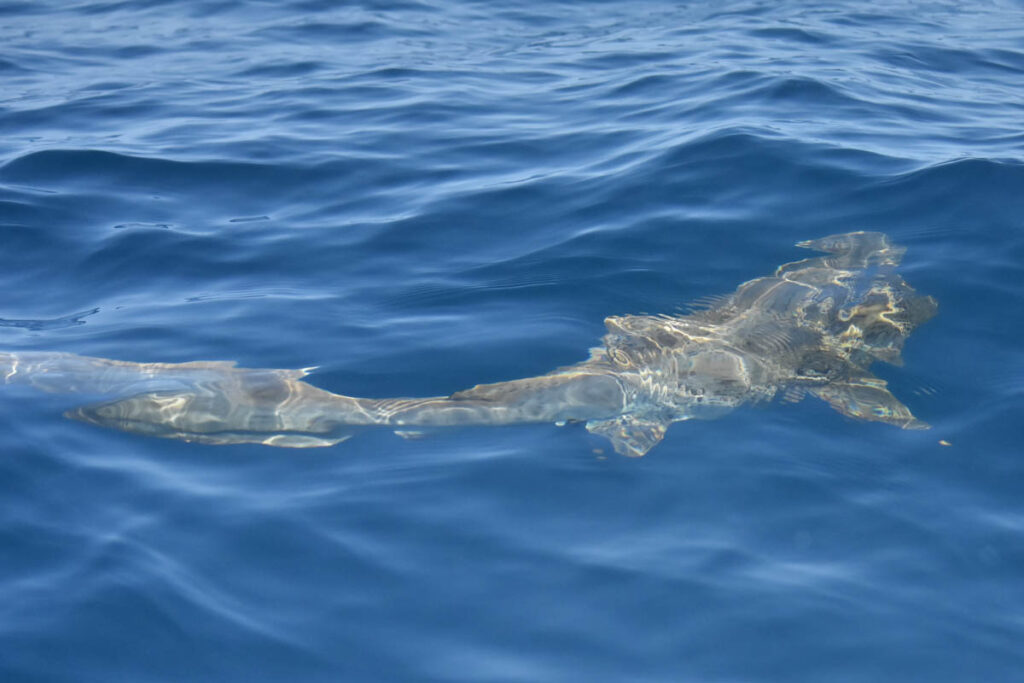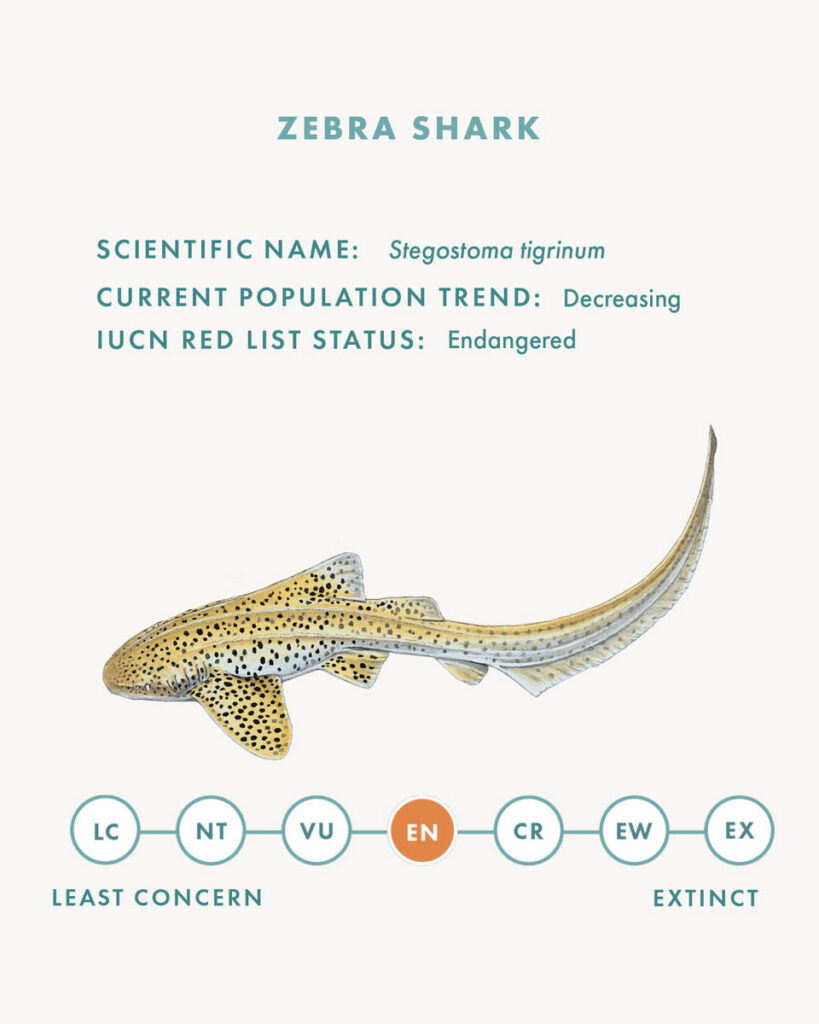The oceans are vast and teeming with life, harboring creatures of all shapes and forms, from the smallest plankton to the mightiest whales. Belonging to the carpet sharks group (having their name inspired by marbled appearance resembling ornamental carpet designs), the Zebra Shark is an enigmatic species, renowned for its striking appearance. Recently, the BCSS team of researchers had been privileged to encounter this captivating shark during their diving expeditions.
Historically known as Stegostoma fasciatum, the Zebra Shark underwent a taxonomic revision in 2019, utilizing mitochondrial markers to re-label the species as Stegostoma tigrinum. This revision unveiled two distinct morphs: the familiar zebra-striped morph and a newly described sandy-colored morph. These morphs exhibit significant differences in external coloration patterns across various life stages, from juveniles to adults. Juvenile Zebra Sharks bear vertical yellow stripes, reminiscent of their namesake, the zebra. This coloration serves as camouflage mimicking the appearance of sea snakes and deterring potential predators. As sharks mature, these stripes gradually transform into a leopard-like pattern of dark spots against a yellow background. This ontogenetic change in coloration is a fascinating adaptation, reflecting shifts in their ecological roles and interactions within their marine environment.
BCSS’s encounter with the Zebra Shark provided invaluable insights into its behavior and habitat preferences. Found resting on sandy bottoms, these nocturnal hunters feed on a diet of crabs, shrimp, and small fish, utilizing their slender bodies and strong gill muscles to maneuver in search of prey.
As Zebra Shark is changing its colour throughout its lifespan from a “zebra” looking pattern at a juvenile stage to a ‘leopard’ appearance in adulthood, no wonder there is a lot of confusion in terminology, and it’s often called a Leopard Shark. However, the Leopard Shark (Triakis semifasciata) inhabits the waters of the West Coast of Mexico and the United States. It displays a distinct gray coloration with a banded pattern and large black or brown dots. While sharing some similarities with the Zebra Shark, such as their preference for shallow waters, Leopard Sharks show unique behaviors, including internal fertilization and live birth of up to 30 pups at a time.
Tropical and subtropical waters inhabitant, Zebra Shark could be seen resting on the bottom or swimming near the ocean’s surface. While some regions of Mozambique have been proved to be hot spot identifying one of the world’s largest populations of zebra sharks (Tofo), very little is known about presence of these species in waters of Bazaruto seascape. They are known to demonstrate migratory movement patterns covering up to 2000 km (Australia), however it is still unclear if the species behave similarly in the Western Indian Ocean. BCSS will continue to collect data on the sightings of this iconic carpet shark and hopefully we’ll be able to determine if reefs of Bazaruto Archipelago may represent a key habitat for Zebra Shark.
Despite their remarkable adaptations, Zebra Sharks face numerous threats, primarily from human activities. Hunted for their meat, fins, and liver oil, they have experienced population declines, leading to their classification as endangered by the IUCN Red List. With reproductive maturity age being 8 years and only 25% of eggs resulting in hatchlings, its decreasing population is in peril. Conservation efforts are crucial to safeguarding these magnificent creatures and preserving their vital role in marine ecosystems.
Encounters with these mesmerizing sharks serve as a reminder of the rich diversity and complexity of marine life. As we continue to explore and study the oceans, it is essential to protect these magnificent creatures for future generations to appreciate and admire. Through monitoring and data collection, we can unlock the mysteries of the deep and ensure the survival of species like the Zebra Shark for generations to come.
What to dive with the marine research station and hear more stories about the wildlife of the iconic Bazaruto seascape? Get in touch with us via info@bcss.org, and we’ll happily share opportunities with you.






